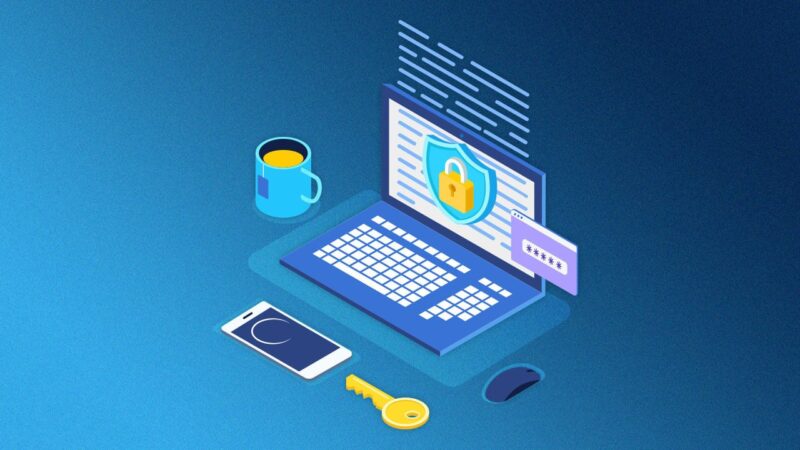In the era of digital communication, social media has become an integral part of our lives. We often share personal stories and photos with friends and family on these platforms, unaware of the risks associated with it.
With this article, we will discuss how to stay safe online by exploring the potential dangers of sharing too much information on social media. We will look at how data is collected and used for advertising purposes as well as how cyber-criminals can use your details to manipulate you or steal from you. By understanding these risks and taking precautions, we can ensure that our online activity remains secure and private.
Understanding the Risks of Oversharing on Social Media
Sharing personal information on social media can be a risky business. It’s easy to accidentally reveal too much, or post something that could be used against you by malicious actors. Oversharing online can also have serious repercussions for your reputation and safety in the real world. To remain secure online, it is important to understand how oversharing can put you at risk and take steps to protect yourself.
When using social media platforms, it is essential to think carefully before posting any content that might compromise your privacy or lead to unwanted attention from strangers. Content shared on public profiles may include photos of yourself and those around you, details about where you live or work, contact information such as phone numbers or email addresses, political opinions, or religious beliefs — all of which could potentially make users vulnerable. Additionally, if an account has been hacked into by someone with ill intentions – whether they are trying to impersonate the user or gain access to private data – then this too could expose them to further risks from cyber criminals and identity thieves alike.
For users to stay safe online when sharing content on social media sites like Facebook and Twitter, there are a few key things one should keep in mind: always double-check what’s visible on your profile; never share sensitive information publicly; use two-factor authentication whenever possible; update passwords regularly; limit who has access to posts through visibility settings; delete old accounts no longer in use; disable location services when not needed; report suspicious activity immediately; and research potential contacts before engaging in conversations with them online.
By following these simple guidelines, individuals will greatly reduce their chances of becoming victims of cybercrime while still enjoying the benefits of social networking without putting themselves at risk
The Dangers of Posting Sensitive Information Online

Posting sensitive information online has become a growing concern as the use of social media continues to increase. From sharing data about your whereabouts and financial details to even more intimate personal details such as medical history or relationships, users need to be aware of who might have access. Unfortunately, hackers are always on the hunt for valuable data that can be used against you and many times they find what they are looking for on social media sites. One of the biggest risks when posting sensitive information is identity theft.
Cybercriminals often gain access to accounts by finding out passwords or other private information shared publicly online by unsuspecting users. They can then use this stolen data to commit fraud or otherwise take advantage of victims in various ways. Even if you think that you are using secure methods such as two-factor authentication, there is still the potential risk that someone may be able to obtain your credentials without your knowledge. Another danger associated with posting sensitive information is reputation damage caused by oversharing too much personal content online.
It’s best practice not to post anything you wouldn’t want future employers or colleagues to see – including photos from wild nights out and opinions about controversial topics – as these could easily come back to haunt you later down the line! Additionally, watch out for any malicious posts made in an attempt at character assassination; don’t give trolls ammunition by responding angrily or providing further details than necessary when challenging them in public arguments – stay safe online!
Maintaining Privacy and Security Settings for Optimal Safety
Sharing too much on social media can lead to major security issues. Users must maintain their privacy and security settings for optimal safety. By default, most social media platforms have their settings set to public view – meaning anyone with an internet connection can see what you’re sharing. To avoid this, users should adjust the visibility of posts by changing their audience from ‘Anyone’ to ‘Friends Only’ or even ‘Only Me’.
Additionally, when creating a profile, users should be mindful of what information they are willingly giving away such as email addresses and phone numbers which could then be used in malicious activities like phishing or identity theft. It may also be beneficial for users to take advantage of two-factor authentication (2FA) where possible – this requires entering a one-time code sent via text message or generated by an app upon logging into your account from unfamiliar devices. This simple step helps protect against hacking attempts since it adds another layer of security following the initial password entry phase.
Users should also think twice before clicking any links shared over social media as these are often sources of malware designed to steal personal data or hijack accounts altogether – if something looks suspicious then it’s best not to click! In addition, avoiding third-party apps that ask for permission to access private user data is recommended since rogue websites have been known to exploit those permissions granted to gain access to user accounts without consenting them first know about it.
In conclusion, taking steps towards protecting yourself digitally will prove vital in staying safe online while using social media platforms — so make sure your privacy and security settings are frequently checked just in case they need adjusting!
Recognizing Signs You May be Sharing Too Much on Social Media Platforms

Sharing too much online is a common mistake many people make without realizing it. You may think youre just being open and honest with your friends, but in reality, you could be making yourself vulnerable to potential risks. To ensure you stay safe online, it’s important to know the warning signs that indicate when you’re sharing too much information on social media platforms.
One sign is posting details of where you are or what activities you’re doing at any given time. While this can seem like harmless fun for some, broadcasting your location and movements can increase the risk of identity theft or other forms of harm. Be mindful about how much detail you share – this includes check-ins for restaurants and stores, as well as tagging pictures from specific locations.
Another indicator that you might be sharing too much is if all your posts are focused around only one topic – whether it’s political opinions or frequent updates about yourself – instead of mixing up content types now and then. Additionally, if all your posts contain explicit language or strong personal views on controversial topics such as religion or politics, these could also be signs that there’s something off balance in terms of what information should be shared publicly versus privately among close friends and family members – not strangers!
Finally, watch out for posts that reveal extremely personal details such as exact addresses or phone numbers; even though most social networks have settings restricting who can view certain info – still beware! Overall knowledge plus caution will keep everyone better protected whilst using social media sites responsibly.


